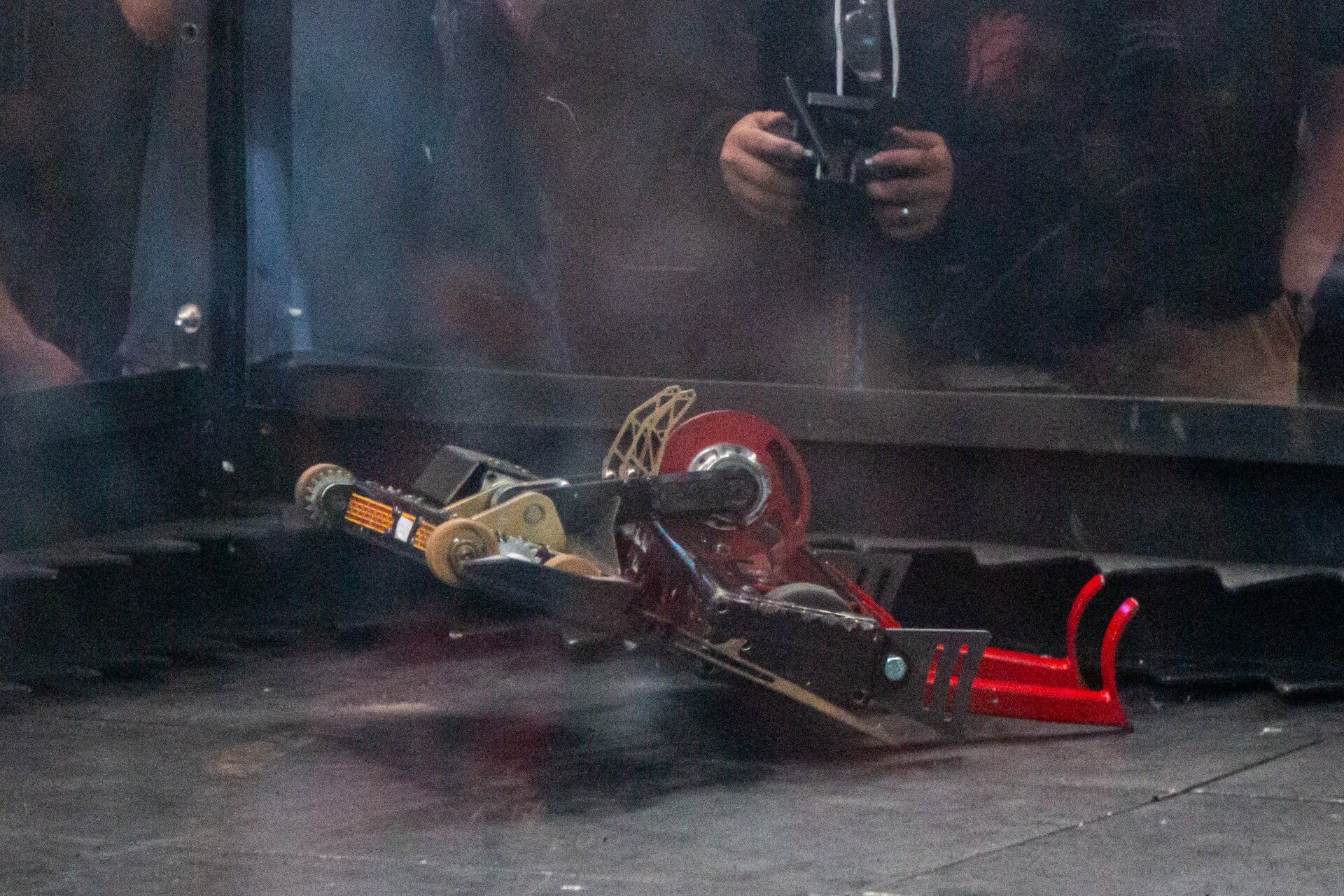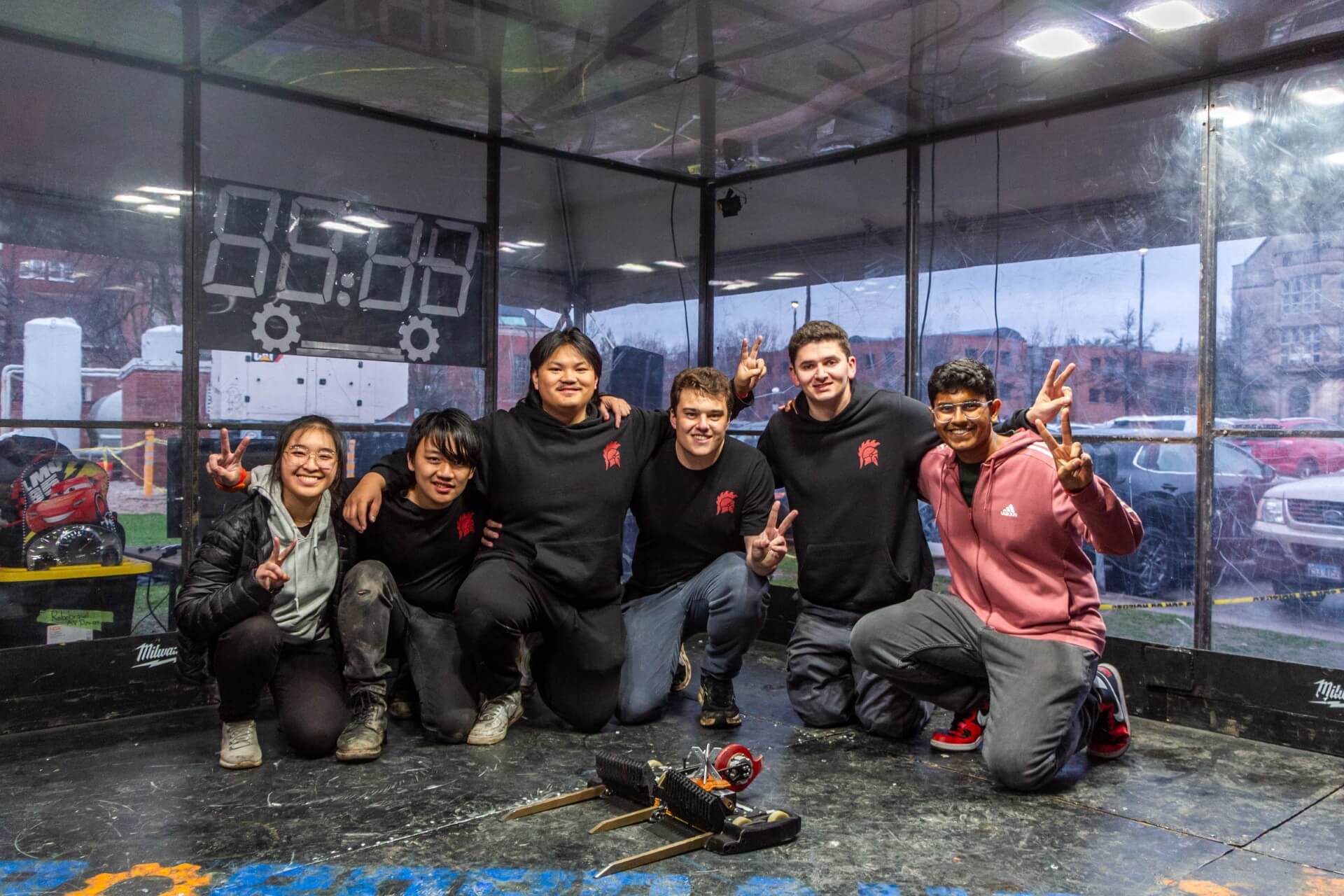Fight Club
What’s the best way to learn how to build a robot? Destroy it.
Or, rather, enter mortal combat with another robot to test whether your design survives.
The YouTube phenomenon of robot battles has inspired the obsessions of many a young engineer. For David Le, a junior studying mechanical engineering, all that screen time was a form of research. If he could just understand the inner workings of those spinners, flippers and hammers, he knew he’d have a competitive advantage when leading his own ferocious robot into battle.

As it happens, that moment wasn’t far off. Within days of enrolling at USC Viterbi, Le founded the USC Advanced Robotic Combat (ARC) team. He leads a group of more than 80 USC students in designing and building combat robots for nationwide competitions. The team’s success over its first two years can be measured by the trail of robotic destruction the members have left in their wake.
David Le“We’re regularly ranked within the top five teams in regional and national competitions,” Le said. “This year, our first 30-pound robot, Aethon, placed fifth at NHRL [National Havoc Robot League] in Connecticut, third at SCAR [Southern California Attack Robotics] and second at Robobrawl — the collegiate robot combat nationals — in Illinois. We’ve beaten student and alumni teams from some of the nation’s top engineering schools — teams that have been in the game for years.”
Le attributes ARC’s success to a careful balance of offensive and defensive strategy. “Aethon is a genuinely experimental robot,” he said. “This is the first time that a collegiate team has demonstrated a full-chassis simulation model, enabling us to rapidly iterate and improve our design. We also have the largest existing database of our potential opponents’ weapons, so we’ve been able to create one of the sturdiest robots you’ll see in the ring.”
Aethon’s superpower is its deceptive simplicity. To an onlooker, the robot appears as a thin compact block with a single spinning blade. That weapon — which has been the death of so many robots — accounts for a small proportion of the robot’s mass. Instead, the main bulk of the robot is dedicated to the nearly impenetrable armor system that protects the efficiently packed electronics.
“What makes Aethon spectacular is how efficient it is,” Le said. “It’s built like a brick, and the integration of the weapon and the motor removes the need for gears and pulleys. Our opponents usually underestimate the weapon because of how much mass we removed, but it has just enough power to pierce a hole right through to where the other robot’s electronics are stored.”

ARC’s next challenge could take the team to a place Le has always believed it should be: TV.
Since 2023, he’s held a part-time position as a simulations engineer at Robotic Death Company, a competitor on the Discovery Channel show “BattleBots.” Now, his double life in the engineering-entertainment industry has helped secure an opportunity rarely granted to undergraduates. ARC is currently building a 250-pound battle robot to compete at “Destruct-A-Thon” in Las Vegas, a live show and test run for potentially appearing on “BattleBots.”
While it’s true that Le’s appetite for robot carnage is unusual for a mechanical engineer — a field typically associated with building effective machines, not smashing them — he is ultimately motivated by creativity and care. His first engineering hero was not a warmongering roboticist, but a hobbyist toymaker — his grandfather — who had been imprisoned by the Viet Cong during the Vietnam War.
“My family is Vietnamese, and my grandparents originally came to the U.S. as refugees,” Le said. “Growing up, I heard stories of my grandfather’s experiences in a prisoner of war camp, and how he would keep his mind and hands busy by making toys from scraps of discarded metal and trash.”
With basic tools from the garden shed, Le’s grandfather showed him how to create playful mechanical devices. That early training turned out to be the perfect primer for the fundamentals of engineering.
When Le was in high school, he started experimenting with 3D printing to build his first robots — most of which, he admits, eventually blew up. His skill level ramped up when he started his first robot combat team with a group of friends. The collaboration intensified the learning process, and together they attended their first competitions. Now, Le is witnessing a new phase of growth as he works with other robot fanatics from across USC Viterbi departments.

“Even though I founded the USC team, I only knew a fraction of what I know now,” Le said. “My teammates are always teaching me things — from solutions for compact packaging to how to apply computational analysis and refine our simulation software. We’re all growing together.”
It turns out that the art of destroying robots is surprisingly effective when forming human bonds. Le’s leadership style is informed by the determination and humility he learned from his grandfather.
“As engineers committed to robotic combat, we have to accept that our beautiful creations will eventually be reduced to piles of bent and ripped metal,” Le reflected. “I’m grateful that my grandpa taught me how to work with that and turn it into something beautiful again.”




